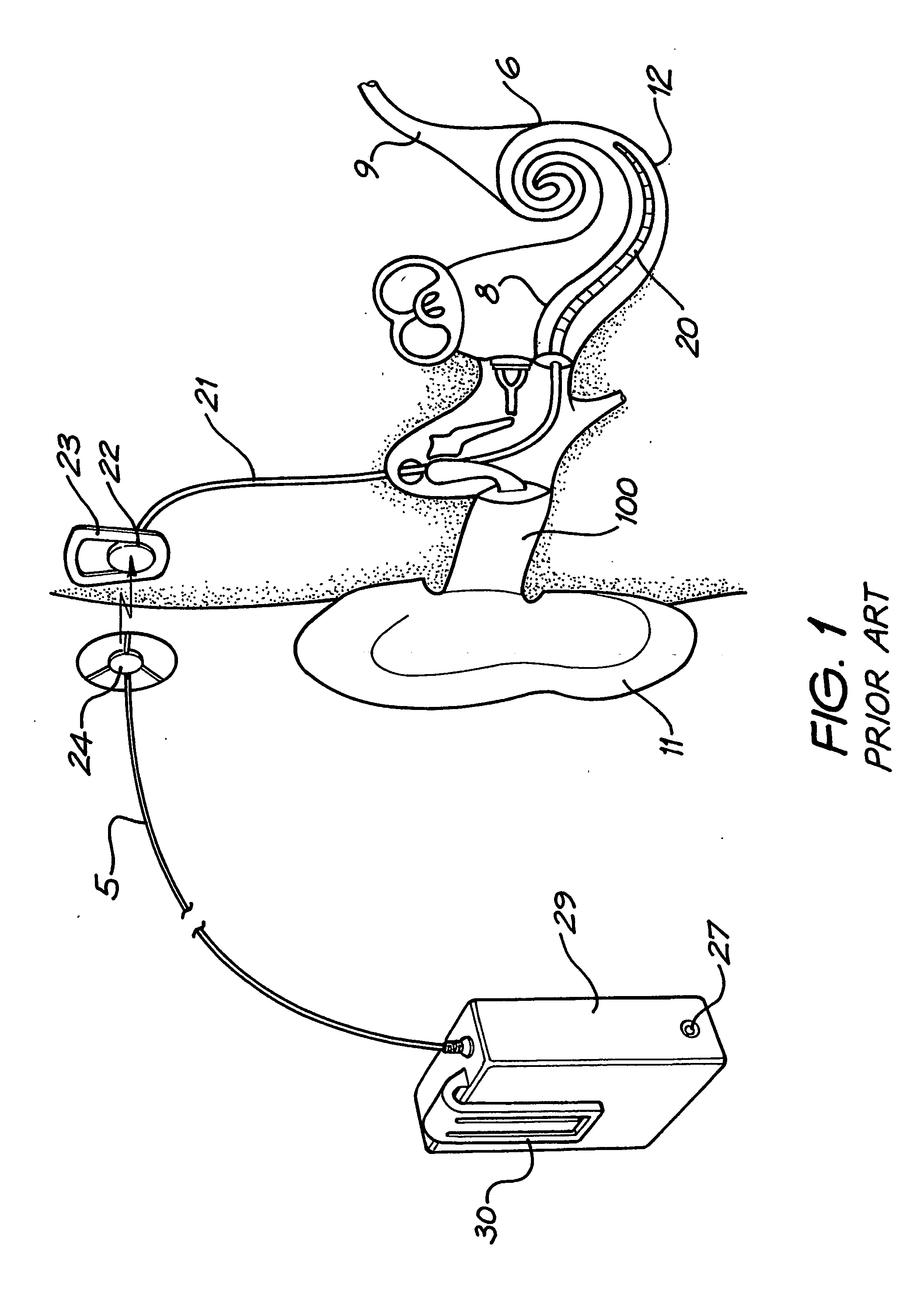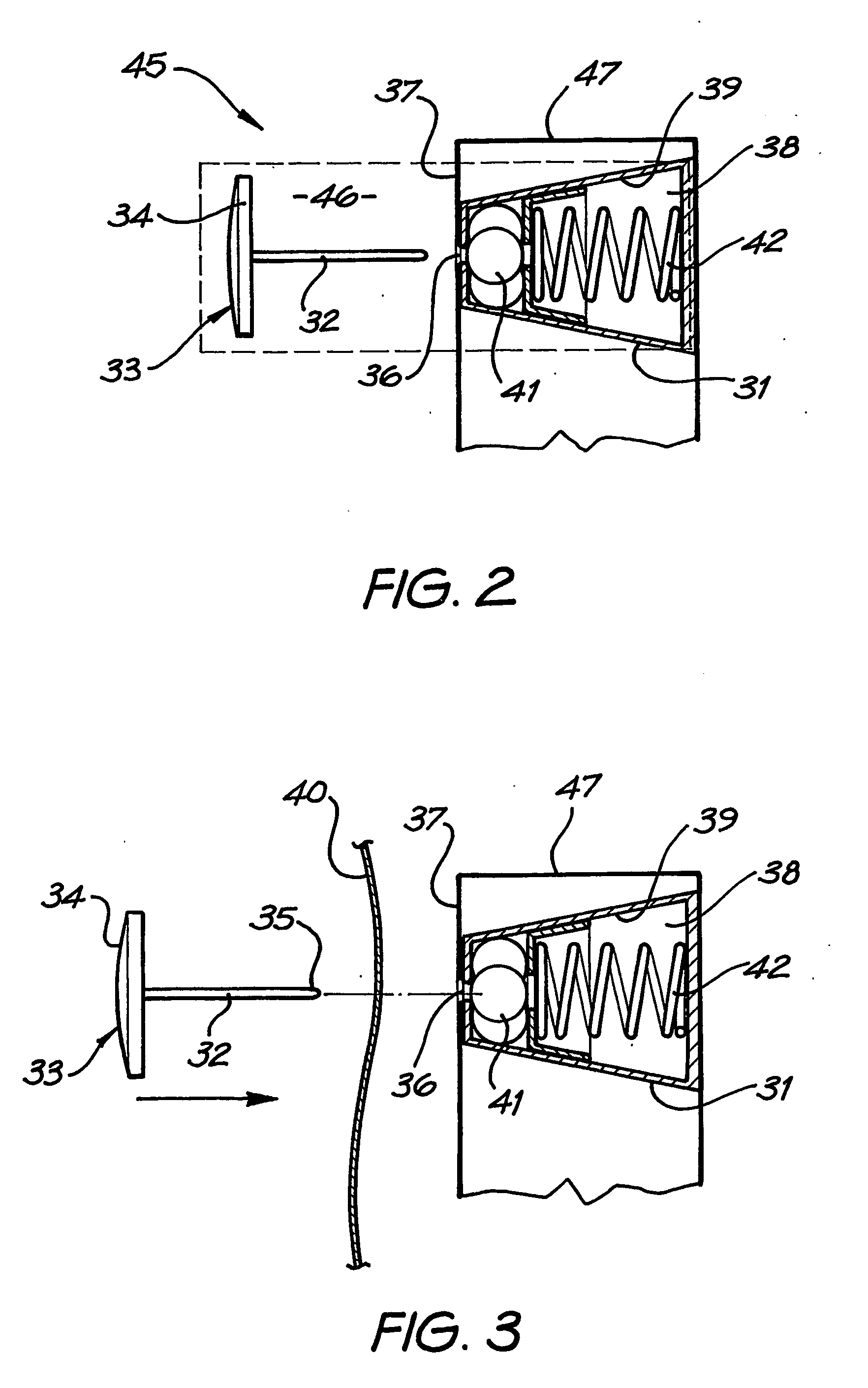Medical device
- Summary
- Abstract
- Description
- Claims
- Application Information
AI Technical Summary
Benefits of technology
Problems solved by technology
Method used
Image
Examples
Embodiment Construction
[0070] While it is to be understood that the present invention has wider application, the invention will be hereinafter described with reference to its application to mounting a speech processor of a cochlear implant to the clothing of a user of the implant.
[0071] Before describing the features of the present invention, it is appropriate to briefly describe the construction of one type of known cochlear implant system with reference to FIG. 1.
[0072] A cochlear implant typically consists of two main components, an external component including a speech processor unit 29, and an internal component including an implanted receiver and stimulator unit 22. The external component includes a microphone 27. The speech processor unit 29 is, in this illustration, constructed and arranged to be clipped to the clothing of a recipient with the use of a clip 30, or carried in a pouch worn by the recipient. In the depicted arrangement, a transmitter coil 24 receives signals from the speech process...
PUM
 Login to View More
Login to View More Abstract
Description
Claims
Application Information
 Login to View More
Login to View More - R&D
- Intellectual Property
- Life Sciences
- Materials
- Tech Scout
- Unparalleled Data Quality
- Higher Quality Content
- 60% Fewer Hallucinations
Browse by: Latest US Patents, China's latest patents, Technical Efficacy Thesaurus, Application Domain, Technology Topic, Popular Technical Reports.
© 2025 PatSnap. All rights reserved.Legal|Privacy policy|Modern Slavery Act Transparency Statement|Sitemap|About US| Contact US: help@patsnap.com



